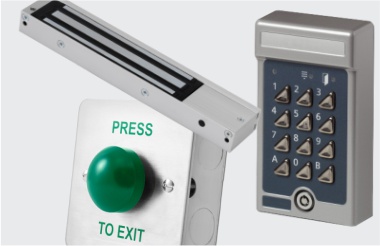The evolution of access control systems
Businesses have always had to think very carefully about security and how employees can access a building, but as security threats have become increasingly sophisticated, so too have security solutions. This has resulted in a situation today where technology plays a huge role in access control, but in addition, offers us many practical and functional benefits also, which certainly weren’t available even at the tail end of the 20th century.
In this guide we will explain how access control has developed over the years, along with a rough timeline so you can put these recent developments into context, and we will also explain the variety of systems currently on the market.
What is an access control system?
An access control system is the means adopted by a business for controlling who has access to the business premises, and how this access is enabled. So for many years this was managed in a largely manual fashion; it was agreed who should be issued with a physical key and the key enabled the key holder to gain access. Today, sophisticated smart systems enable people to flash a smartphone at a central interface and gain access, which can be controlled centrally and remotely by an administrator who can grant and revoke access accordingly.
How has access control evolved over the years?
We have used manual keys as a means of entry since the middle ages, although it is worth remembering that when we first realised that a form of security was required, this would be to protect individual items of value, rather than make an entire building secure. So locksmiths are a profession that has been around for many years, and steel keys have been used for centuries. The first mechanical locks were very basic and primitive, and these have gradually evolved to include greater levels of sophistication to make the lock more complex and secure. Yale locks are a good example of this, if you compare those keys with various grooves and ridges of differing size to the very basic design of a standard skeleton key.
At this time, keys will have been in the care and management of a single gatekeeper or manager, but the late 18th century saw the Industrial Revolution and the advent of mass production and 24-hour production facilities. This required more manpower on security and a need to increase the number of keys issued. In the 1950s these kind of production facilities started using clock card systems, whereby a card would be stamped by a machine with the date and time, to indicate someone was present at work, but a key would still be needed to gain access if a building was locked. Late in the 20th century this evolved to using intercoms and magnetic strip cards to gain access.
These were the first examples of a keyless system, but in most cases a business would still have manned security managing car park barriers or security offices, and would employ a receptionist for front-of-house duties and to manually manage access to the building. If an operation ran for 24 hours this could involve the employment of two or three people, which is how automation came to be developed, to make this function more cost-effective while still maintaining the requisite levels of security.
In the 1990s keyless entry had evolved to include chips in cards and fobs which could be read by a central interface, and these largely replaced the traditional key. Today, in the 21st century, the internet has enabled the use of smart technology so now we can use smart phones and digital signals to access buildings, while biometric features also offer a unique means of entry which is far more secure than using a physical key.
Access control systems today
So in 2024 we have fully automated access control systems which can operate unmanned on a 24/7 basis, can be managed centrally and remotely by an administrator, have added functionality for monitoring which can help human resources and health & safety functions and can be integrated with other services. Modern access control systems can link with CCTV and security alarms to provide a robust security system, and can also link to other smart systems such as heating and lighting to help save money on energy usage.
If you are considering a new access control system then have a look at the range of security solutions supplied by MB Direct. We can supply an access control system to suit the size of your business along with your practicality and functionality needs, so order online with us today.